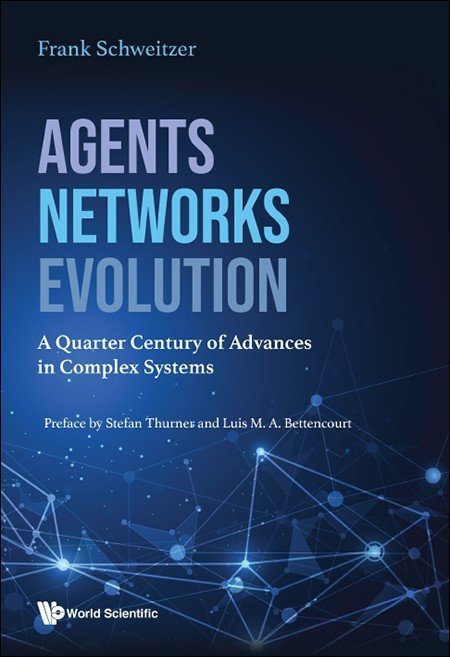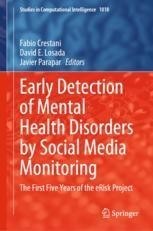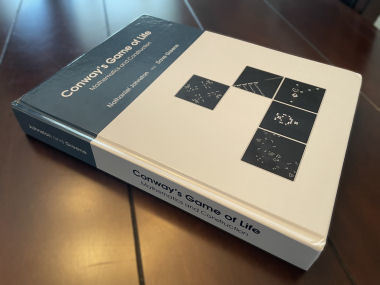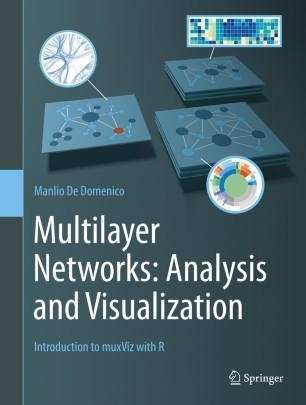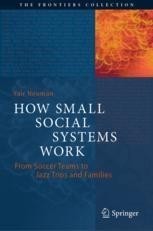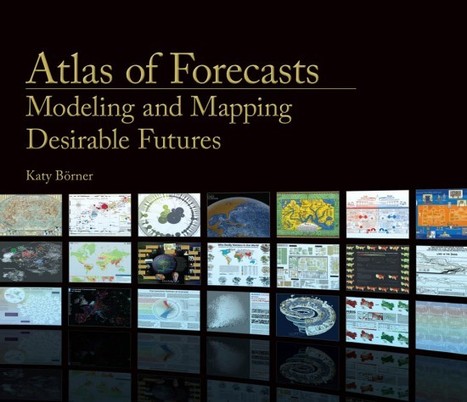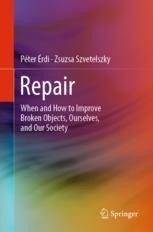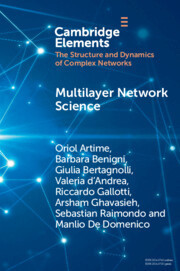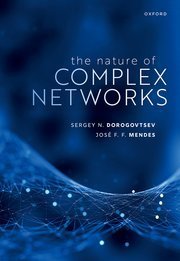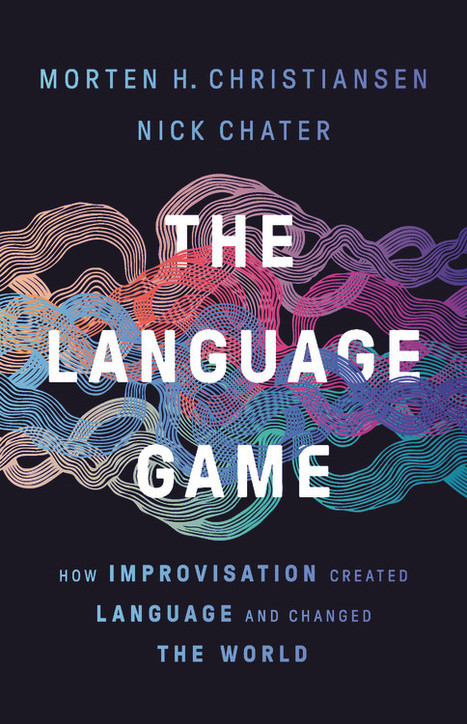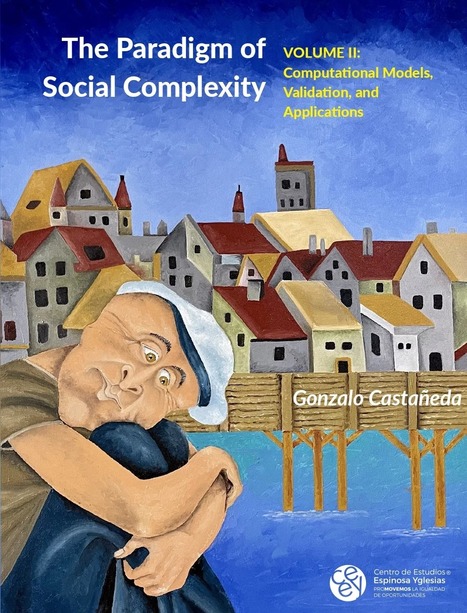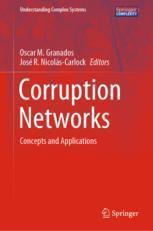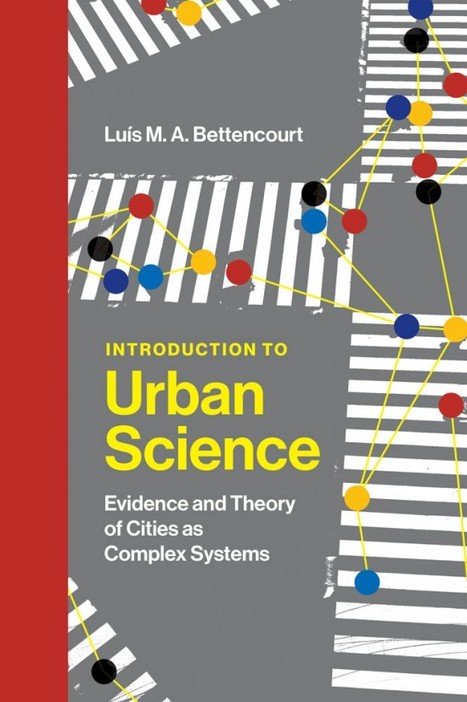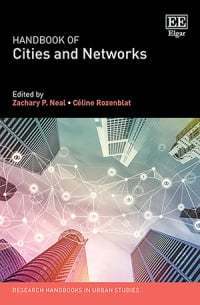 Your new post is loading...
 Your new post is loading...
Scientific progress during the last three decades has greatly profited from our advances in understanding complex systems. Fundamental modeling approaches were considerably improved, particularly agent-based modeling, network science, nonlinear dynamics, and system science. At the same time, these approaches have been applied to and adopted by various scientific disciplines, ranging from physics and chemistry to engineering, molecular biology, economics, and the social sciences. This book reflects the success of complexity science both from a historical and a modeling perspective. It uses 25 articles from different disciplines, published over 25 years, to demonstrate the power and problems of modeling complex systems. The book's four parts, Agent-based Models, Network Models, Models of System Dynamics, and Models of Evolution, each provide an informative synopsis of the respective modeling approach. An introductory overview summarizes each approach's essential concepts, addresses the main research directions, and reviews applications in various disciplines. The selection of reprinted publications is motivated by their scientific relevance and methodological contributions to understanding complex phenomena. A chronological list of publications details the development of each modeling approach over the past 25 years. The e-book is freely accessible for one year from the date of release. Read the full book at: www.worldscientific.com
Editors: Fabio Crestani, David E. Losada, Javier Parapar
Presents techniques for the early Detection of Mental Health Disorders by Social Media Monitoring Recent research on eRisk which stands for Early Risk Prediction on the Internet Presents the best results of the first five years of the eRisk project Read the full article at: link.springer.com
from Helgoland: Making Sense of the Quantum Revolution by Carlo Rovelli From subatomic particles to human beings, interaction is what shapes reality (...) Perhaps this is precisely what “properties” are: the effects of interactions. A good scientific theory, then, should not be about how things “are”, or what they “do”: it should be about how they affect one another. (...) Reality is not a collection of things, it’s a network of processes. If this is correct, I think it comes with a lesson. We understand reality better if we think of it in terms of interactions, not individuals. Read the full article at: www.theguardian.com
This volume presents the proceedings of the 2022 Conference on Artificial Life (ALIFE 2022) which took place in Trento,
18-22 July 2022 (https://2022.alife.org/). The conference was held virtually due to the ongoing COVID-19 pandemic.
The ALIFE 2022 conference theme is ‘La DOLCE vita. Discoveries on Life Complexity and Evolution for the improvement
of real lives’. The conference theme explores how to improve the quality of real life using techniques and discoveries from
the ALife field. This covers various topics including (but not limited to): the creation of artificial cells and organisms for
health and technological applications, engineered ecosystems for improved environmental quality and sustainable agriculture,
virtual/augmented reality creations with positive social impact, the well-being of our digital infrastructure, AI and ALife algorithms for equitable access to resources and accurate information, AI, ALife or robot assistance for those in need, AI, ALife
or robot applications for food production and distribution, the regeneration, redistribution and reuse of everyday resources,
microbial fuel cell systems for renewable energy, and other innovative technologies for social good. Read the full book at: direct.mit.edu
Nathaniel Johnston and Dave Greene This book provides an introduction to Conway's Game of Life, the
interesting mathematics behind it, and the methods used to construct
many of its most interesting patterns. Lots of small "building
block"-style patterns (especially in the first four or so chapters of
this book) were found via brute-force or other computer searches, and
the book does not go into the details of how these searches were
implemented. However, from that point on it tries to guide the reader
through the thought processes and ideas that are needed to combine
those patterns into more interesting composite ones. While the book largely follows the history of the Game of Life, that
is not its primary purpose. Rather, it is a by-product of the fact
that most recently discovered patterns build upon patterns and
techniques that were developed earlier. The goal of this book is to
demystify the Game of Life by breaking down the complex patterns that
have been developed in it into bite-size chunks that can be understood
individually. More at: conwaylife.com
Provides practical recipes to use muxViz for specific purposes, bypassing theoretical obstacles
Includes dozens of examples whose R code is provided and directly linked from inside the text
Comes with, and builds on, a significant extension of the muxViz platform that can be used without needing a GUI More at: link.springer.com
Edited by Federico Battiston, Giovanni Petri This book discusses its potential to model real-world systems and how considering their higher-order organization can lead to the emergence of novel dynamical behavior. Over the last decades, networks have emerged as the paradigmatic framework to model complex systems. Yet, as simple collections of nodes and links, they are intrinsically limited to pairwise interactions, limiting our ability to describe, understand, and predict complex phenomena which arise from higher-order interactions. Here we introduce the new modeling framework of higher-order systems, where hypergraphs and simplicial complexes are used to describe complex patterns of interactions among any number of agents. This book is intended both as a first introduction and an overview of the state of the art of this rapidly emerging field, serving as a reference for network scientists interested in better modeling the interconnected world we live in. Read the full article at: link.springer.com
COVID-19 is the virus that proved the fragility of the world. It took only the simplest form of life to shake the connectivity and dependency of society. This book is a real-time record and recommendation from a community of complexity scientists reacting to the pandemic. Through nontechnical articles, interviews, and discussions spanning the early days of the pandemic through the fall of 2021, researchers seek ways to stay responsive to complexity when every force conspires toward simplicity. The Complex Alternative encompasses immunology, epidemiology, psychology, inequality, and collapse. It is an effort to preserve perspective at a time when partiality seeks dominion. Edited by David C. Krakauer and Geoffrey West, this book features the thoughts of more than sixty members of the Santa Fe Institute’s research community on the future of complexity science and the broader significance of science in the twenty-first century. More at: www.sfipress.org
Written by some of the founders of complexity theory and complexity theories of cities (CTC), this Handbook expertly guides the reader through over forty years of intertwined developments: the emergence of general theories of complex self-organized systems and the consequent emergence of CTC.
Examining studies from the end of 1970 through to the current leading approach to urbanism, planning and design, the book provides an up-to-date snapshot of CTC. Insightful chapters are split into five parts covering the early foundations of the topic, the evolution of towns and cities and urban complexity, the links between complexity, languages and cities, modelling traffic and parking in cities, and urban planning and design. The Handbook on Cities and Complexity concludes with the contributors’ personal statements on their observations of COVID-19’s impact upon global cities.
This book will be an invaluable resource for those researching cities and complexity and also for scholars of urban studies, planning, physics, mathematics, AI, and architecture.
More at: www.e-elgar.com
Most of us are intuitively familiar with small social systems, such as families and soccer teams. Surprisingly, though, most of us are unaware of how complex these systems are or of the fact that they have a unique character distinguishing them from both populations and individuals. The current manuscript, which emerged from high-level scientific publications on the subject, aims to bridge this gap in our understanding of small social systems. The book aims to explain, illustrate, and model the unique and fascinating nature of small (social) systems by relying on deep scientific foundations and by using examples from sport, movies, music, and the martial arts. To support its friendly exposition of challenging scientific ideas, the book also discusses entertaining questions such as (1) why inviting your mother-in-law to dinner might be a challenging event, for reasons you have never considered; (2) why soccer teams should be messy in order to win; (3) why Nazis are deeply wrong in their understanding of the importance of entropy; and (4) why “panda fighters” failed in the UFC (Ultimate Fighting Championship). More at: www.springer.com
Forecasting the future with advanced data models and visualizations. To envision and create the futures we want, society needs an appropriate understanding of the likely impact of alternative actions. Data models and visualizations offer a way to understand and intelligently manage complex, interlinked systems in science and technology, education, and policymaking. Atlas of Forecasts, from the creator of Atlas of Science and Atlas of Knowledge, shows how we can use data to predict, communicate, and ultimately attain desirable futures. Using advanced data visualizations to introduce different types of computational models, Atlas of Forecasts demonstrates how models can inform effective decision-making in education, science, technology, and policymaking. The models and maps presented aim to help anyone understand key processes and outcomes of complex systems dynamics, including which human skills are needed in an artificial intelligence–empowered economy; what progress in science and technology is likely to be made; and how policymakers can future-proof regions or nations. This Atlas offers a driver's seat-perspective for a test-drive of the future. More at: mitpress.mit.edu
Jitka Čejková, Silvia Holler, Lisa Soros, Olaf Witkowski (Eds) MIT Press The theme of ALIFE 2021 conference is ”Robots: The century past and the century ahead”, because we celebrate the centenary of Čapek's R.U.R. and the worldwide-used word “robot”, which comes from this play. The conference was originally scheduled to be held in Prague, the city where the play had its official world premiere in 1921. However, because of the covid-19 pandemic and its repercussions, ALIFE 2021 conference is virtual. Read the full proceedings at: direct.mit.edu
|
Learn how the tools that enabled us to overcome the uncertainty of the weather will enable us to find new answers to modern science's most pressing questions. Why does your weather app say “There’s a 10% chance of rain” instead of “It will be sunny tomorrow”? In large part this is due to the insight of Tim Palmer, who made uncertainty essential to the study of weather and climate. Now he wants to apply it to how we study everything else. In The Primacy of Doubt, Palmer argues that embracing the mathematics of uncertainty is vital to understanding ourselves and the universe around us. Whether we want to predict climate change or market crashes, understand how the brain is able to outpace supercomputers, or find a theory that links quantum and cosmological physics, Palmer shows how his vision of mathematical uncertainty provides new insights into some of the deepest problems in science. The result is a revolution—one that shows that power begins by embracing what we don’t know. More at: www.basicbooks.com
This book propagates a new way of thinking about managing our resources by integrating the perspectives of complex systems theory and social psychology. By resources, the authors mean objects, such as cell phones and cars, and human resources, such as family members, friends, and the small and large communities they belong to. As we all face the "replace or repair" dichotomy, readers will understand how to repair themselves, their relationships, and communities, accept the "new normal," and contribute to repairing the world. The book is offered to Zoomers, growing up in a world where it seems everything is falling apart; people in their 30s and 40s, who are thinking about how to live a fulfilling life; people from the Boomers generation, who are thinking back on life and how to repair relationships. The Reader will enjoy the intellectual adventure of connecting the natural and social worlds and understanding the transition's pathways from a "throwaway society" to a "repair society. More at: link.springer.com
Oriol Artime, Barbara Benigni, Giulia Bertagnolli, Valeria d'Andrea, Riccardo Gallotti, Arsham Ghavasieh, Sebastian Raimondo, and Manlio De Domenico Networks are convenient mathematical models to represent the structure of complex systems, from cells to societies. In the last decade, multilayer network science – the branch of the field dealing with units interacting in multiple distinct ways, simultaneously – was demonstrated to be an effective modeling and analytical framework for a wide spectrum of empirical systems, from biopolymers networks (such as interactome and metabolomes) to neuronal networks (such as connectomes), from social networks to urban and transportation networks. In this Element, a decade after one of the most seminal papers on this topic, the authors review the most salient features of multilayer network science, covering both theoretical aspects and direct applications to real-world coupled/interdependent systems, from the point of view of multilayer structure, dynamics and function. The authors discuss potential frontiers for this topic and the corresponding challenges in the field for the next future. More at: www.cambridge.org
Anne Dambricourt Malassé (ed.) Shows how the new synthesis integrates scientific models of self-organization Summarizes modern observations in paleontology and biology Highlights various examples of self-organization as observed in the human lineage. More at: link.springer.com
Sergey N. Dorogovtsev and José F. F. Mendes
Provides a systematic account of the statistical mechanics of complex networks
Covers recent trends, concepts, and theoretical techniques, and emphasises interdisciplinary strands
Broad appeal to researchers in complex systems including theoretical physicists and applied mathematicians as well as epidemiologists
Extensive bibliography and appendices offer excellent reference source for students and researchers More at: global.oup.com
by Morten H. Christiansen and Nick Chater Forget the language instinct—this is the story of how we make up language as we go Language is perhaps humanity’s most astonishing capacity—and one that remains poorly understood. In The Language Game, cognitive scientists Morten H. Christiansen and Nick Chater show us where generations of scientists seeking the rules of language got it wrong. Language isn’t about hardwired grammars but about near-total freedom, something like a game of charades, with the only requirement being a desire to understand and be understood. From this new vantage point, Christiansen and Chater find compelling solutions to major mysteries like the origins of languages and how language learning is possible, and to long-running debates such as whether having two words for “blue” changes what we see. In the end, they show that the only real constraint on communication is our imagination. More at: www.basicbooks.com See Also: The Spontaneous Origins of Language
Volume I: An Alternative Way of Understanding Societies and their Economies
Volume II: Computational Models, Validation, and Applications Gonzalo Castañeda With the recent developments in computing technologies and the thriving research scene in Complexity Science, economists and other social scientists have become aware of a more flexible and promising alternative for modelling socioeconomic systems; one that, in contrast with neoclassical economics, advocates for the realism of the assumptions, the importance of context and culture, the heterogeneity of agents (individuals or organisations), and the bounded rationality of individuals who behave and learn in multifaceted ways in uncertain environments. The book synthesises an extensive body of work in the field of social complexity and constructs a unifying framework that allows developing concrete applications to important socioeconomic problems. This one-of-a-kind textbook provides a comprehensive panorama for advanced undergraduates and graduate students who want to become familiar with a wide range of issues related to social complexity. It is also a pioneering text that can support professors who wish to learn techniques and produce research in this novel field.
After reviewing the main concepts, premises and implications of complexity theory, the book frames this vision within the history of economic thought. Then, it articulates a meta-theory in which interdependent agents are embedded in a social context and whose collective and decentralised behaviour generates socio-economic phenomena. Such a framework builds on theories from evolutionary, institutional and behavioural economics, as well as analytical sociology. The book then reviews different computational tools for modelling complex adaptive systems, such as cellular automata, networks, and agent-based models. It elaborates on their analytical advantages in comparison to equation-based models, and how they can be calibrated/estimated and validated with empirical data. Finally, the book advocates for the practical use of these computational tools and makes a case for policy applications and the study of causal mechanisms. More at: www.social-complexity.com
Euan Mearns and Didier Sornette From 1966 to 1976, four large earthquakes shook the Bohai Bay rift basin of Northeast China. This prompted the Chinese to launch one of the world’s largest social and science experiments into earthquake prediction that would engage tens of thousands of common people. The climax of this came in February 1975 where a prediction was made hours before the Haicheng earthquake struck. Evacuation of the city of Yingkou and some rural districts saved thousands of lives. The Chinese were jubilant, believing they had cracked the earthquake prediction conundrum. Eighteen months later, however, on the 28th July, 1976, jubilation turned to despair when a great earthquake flattened the large industrial city of Tangshan resulting in 250,000 to 650,000 casualties. This book describes the geological, technical, political and sociological backgrounds to the Haicheng prediction success and the Tangshan prediction failure.
Ahead of the Tangshan earthquake, Chinese seismologists had accumulated significant information that suggested an earthquake was imminent and came close to making a prediction. With improved knowledge and vastly improved ability to accumulate, consolidate and analyse data, this book suggests that Tangshan could have been predicted today using techniques developed in China in that epic decade of discovery. Building on these insights, it also offers a viable future pathway towards earthquake predictions that combines the insights and organisation of the 1966-1976 Chinese prediction program with modern technologies, in order to facilitate data gathering, interpretation and sharing. More at: www.cambridgescholars.com
Presents current theoretical, empirical, and operational efforts tackling corruption studies.
Introduces the relevance of evidence-based and network approaches to anticorruption.
Discusses the best ways to convert the obtained knowledge into public policy. More at: link.springer.com
Edited by Jitka Čejková, Silvia Holler, Lisa Soros, Olaf Witkowski MIT Press This volume contains the proceedings of the 2021 Conference on Artificial Life (ALIFE 2021) which was originally scheduled to be held in Prague (Czech Republic) 19 - 23 July 2021, but because of the covid-19 pandemic and its repercussions, is being held virtually only. (https://2021.alife.org/). The International Conference on the Synthesis and Simulation of Living Systems (ALIFE) and the European Conference on Artificial Life (ECAL) have been the major meetings of the artificial life (ALife) research community since 1987 and 1991, respectively. Currently, these scientific gatherings are supported by the International Society for Artificial Life (ISAL) - a democratic, international, professional society dedicated to promoting scientific research and education relating to artificial life, including sponsoring this conference annually, publishing scientific journals and proceedings, and maintaining web sites related to artificial life. Read the full proceedings at: direct.mit.edu
A novel, integrative approach to cities as complex adaptive systems, applicable to issues ranging from innovation to economic prosperity to settlement patterns. Human beings around the world increasingly live in urban environments. In Introduction to Urban Science, Luis Bettencourt takes a novel, integrative approach to understanding cities as complex adaptive systems, claiming that they require us to frame the field of urban science in a way that goes beyond existing theory in such traditional disciplines as sociology, geography, and economics. He explores the processes facilitated by and, in many cases, unleashed for the first time by urban life through the lenses of social heterogeneity, complex networks, scaling, circular causality, and information. Though the idea that cities are complex adaptive systems has become mainstream, until now those who study cities have lacked a comprehensive theoretical framework for understanding cities and urbanization, for generating useful and falsifiable predictions, and for constructing a solid body of empirical evidence so that the discipline of urban science can continue to develop. Bettencourt applies his framework to such issues as innovation and development across scales, human reasoning and strategic decision-making, patterns of settlement and mobility and their influence on socioeconomic life and resource use, inequality and inequity, biodiversity, and the challenges of sustainable development in both high- and low-income nations. It is crucial, says Bettencourt, to realize that cities are not “zero-sum games” and that knowledge, human cooperation, and collective action can build a better future. More at: mitpress.mit.edu
Edited by Zachary P. Neal and Céline Rozenblat This Handbook of Cities and Networks provides a cutting-edge overview of research on how economic, social and transportation networks affect processes both in and between cities. Exploring the ways in which cities connect and intertwine, it offers a varied set of collaborations, highlighting different theoretical, historical and methodological perspectives. More at: www.e-elgar.com
|



 Your new post is loading...
Your new post is loading...

